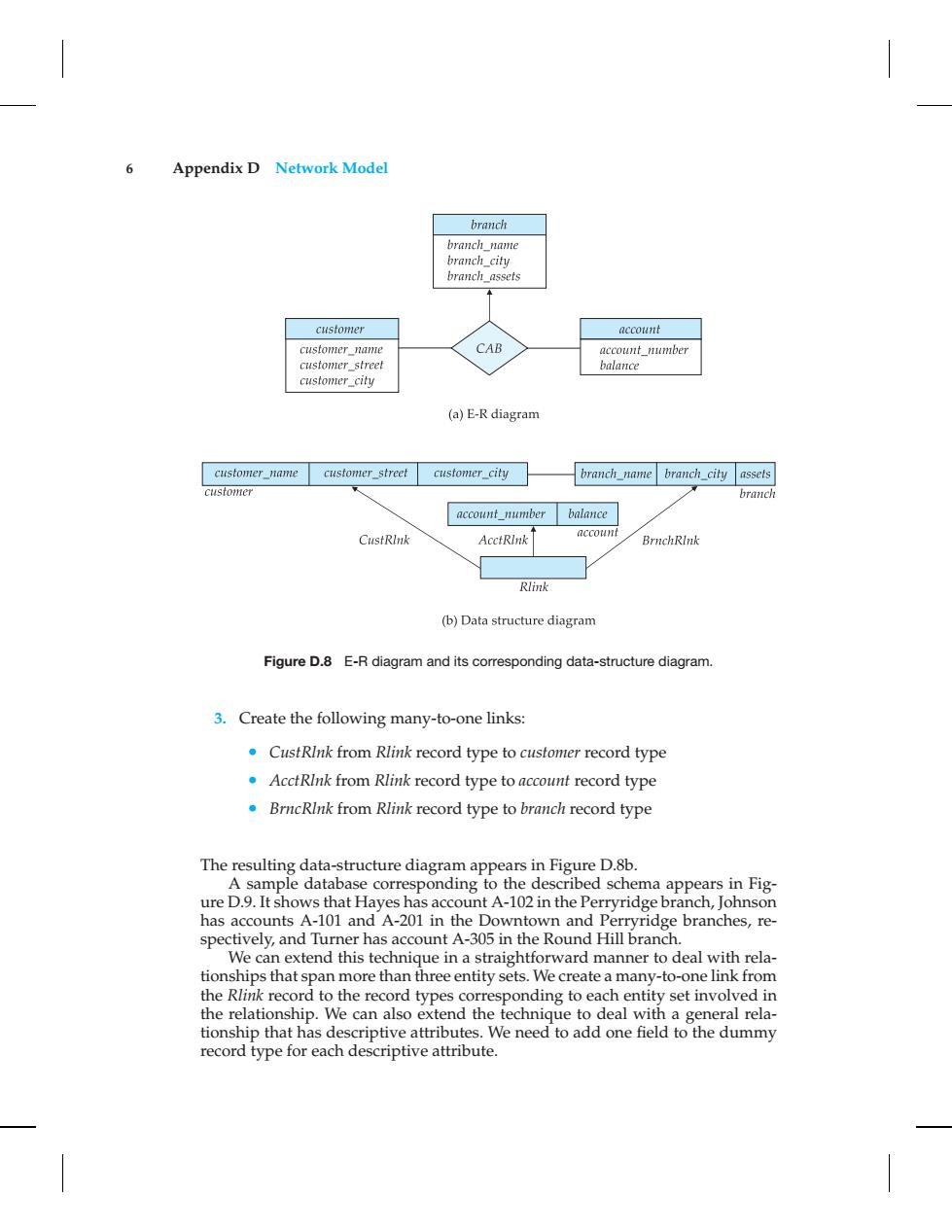正在加载图片...

Appendix D Network Model branch branch name branch_city branch_assets customer account customer name CAB account_number customer_street balance customer_city (a)E-R diagram customer name customer_street customer city branch_name branch_city assets customer branch account_number balance CustRInk account AcctRink BrnchRInk Rlink (b)Data structure diagram Figure D.8 E-R diagram and its corresponding data-structure diagram. 3.Create the following many-to-one links: CustRInk from Rlink record type to customer record type .AcctRInk from Rlink record type to account record type BrncRInk from Rlink record type to branch record type The resulting data-structure diagram appears in Figure D.8b. A sample database corresponding to the described schema appears in Fig- ure D.9.It shows that Hayes has account A-102 in the Perryridge branch,Johnson has accounts A-101 and A-201 in the Downtown and Perryridge branches,re- spectively,and Turner has account A-305 in the Round Hill branch. We can extend this technique in a straightforward manner to deal with rela- tionships that span more than three entity sets.We create a many-to-one link from the Rlink record to the record types corresponding to each entity set involved in the relationship.We can also extend the technique to deal with a general rela- tionship that has descriptive attributes.We need to add one field to the dummy record type for each descriptive attribute.6 Appendix D Network Model Figure D.8 E-R diagram and its corresponding data-structure diagram. 3. Create the following many-to-one links: • CustRlnk from Rlink record type to customer record type • AcctRlnk from Rlink record type to account record type • BrncRlnk from Rlink record type to branch record type The resulting data-structure diagram appears in Figure D.8b. A sample database corresponding to the described schema appears in Figure D.9. It shows that Hayes has account A-102 in the Perryridge branch, Johnson has accounts A-101 and A-201 in the Downtown and Perryridge branches, respectively, and Turner has account A-305 in the Round Hill branch. We can extend this technique in a straightforward manner to deal with relationships that span more than three entity sets. We create a many-to-one link from the Rlink record to the record types corresponding to each entity set involved in the relationship. We can also extend the technique to deal with a general relationship that has descriptive attributes. We need to add one field to the dummy record type for each descriptive attribute